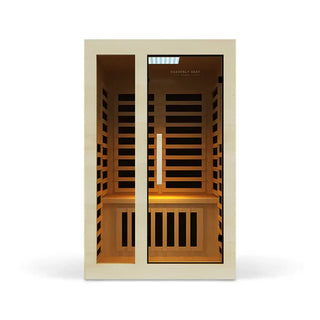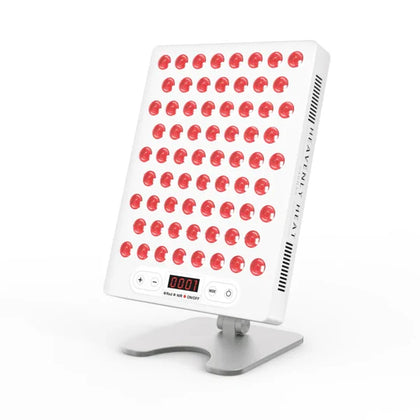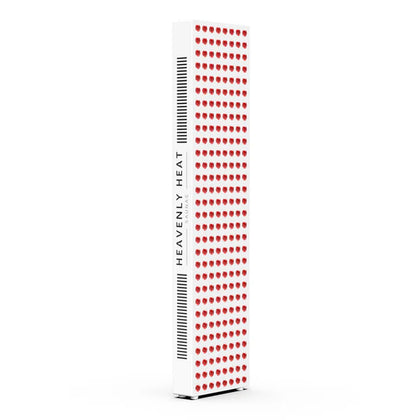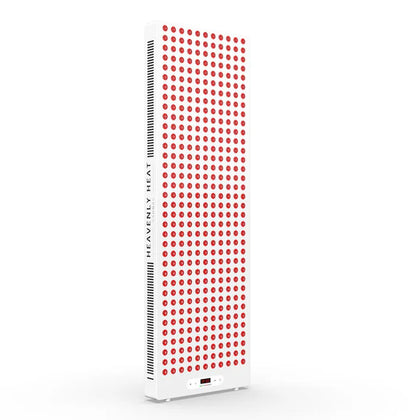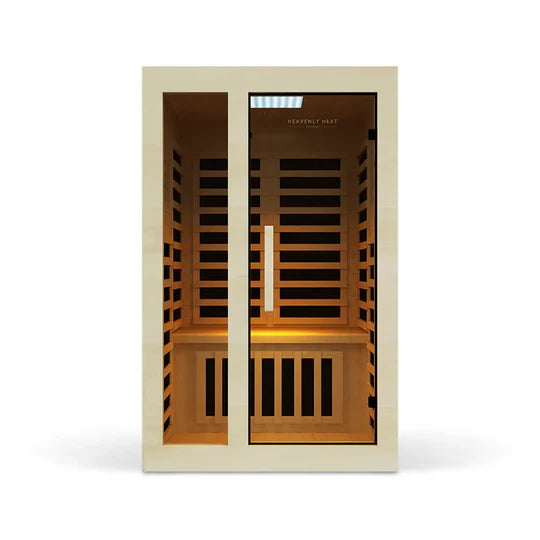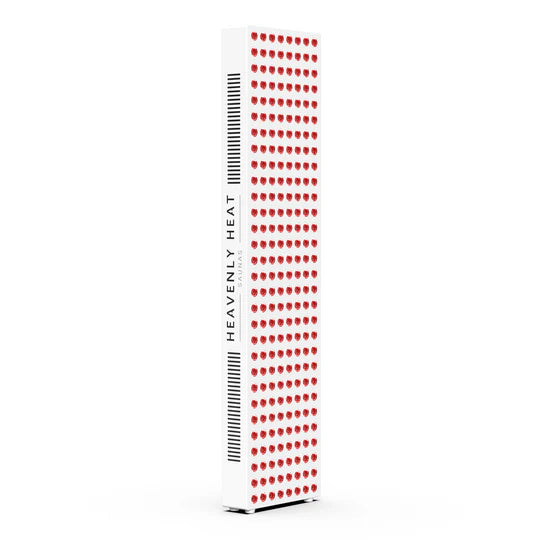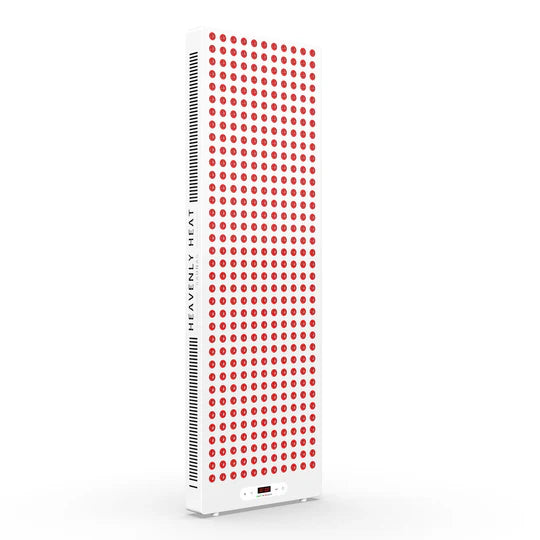Does Red Light Therapy Help Eczema?

Eczema, with its dry, itchy patches and painful flare-ups, can make everyday life a constant struggle.
The discomfort can affect your sleep, confidence, and overall well-being. Ignoring these symptoms often leads to worsening skin damage and emotional distress.
But could red light therapy offer a breakthrough solution? Read on to discover how this treatment might help soothe your eczema.
Table of contents
Key Takeaways
-
Calm Your Skin Naturally: Red light therapy reduces inflammation and soothes eczema flare-ups.
-
Support Healing from Within: It promotes collagen and skin repair to speed up recovery.
-
Strengthen Your Skin Barrier: Regular use may help reinforce your skin’s natural defenses.
-
Keep It Simple: Sessions are quick, non-invasive, and easy to do at home.
-
Use with Care: Start slow, choose the right device, and monitor for any irritation.
What is Eczema?
According to the National Eczema Association, eczema is a group of inflammatory skin conditions that cause dryness, itching, rashes, and sometimes painful infections. While there is no known cure, it’s believed to result from a combination of genetic and environmental factors that disrupt the skin’s natural barrier and immune response.
Among the most common causes of eczema are:
Genetics : A family history of eczema, asthma, or allergies increases the likelihood of developing it.
Immune system dysfunction : An overactive immune system triggers inflammation in response to normally harmless substances.
Environmental triggers : Exposure to allergens (like dust mites or pet dander), irritants (such as soaps or fabrics), and climate changes can spark flares.
Stress : Emotional stress is a well-known factor that can worsen symptoms.
Weakened skin barrier : When the skin’s protective layer is compromised, it loses moisture and becomes vulnerable to irritants and allergens.
Eczema can deeply impact daily life, persistent itching, discomfort, and visible skin changes often affect sleep, confidence, and focus. A practical approach to management includes gentle skincare, identifying triggers, and using prescribed medications. For those seeking alternatives, phototherapy or acupuncture may provide relief. While there’s no cure yet, many effective options exist to help people live comfortably with eczema.

Understanding the Root Causes of Eczema
Genetic Factors
Mutations in certain skin barrier genes, like filaggrin, can make the skin more vulnerable to irritants.
These changes weaken the skin’s natural defenses, making it easier for allergens and irritants to trigger inflammation.
While some at-home genetic tests now claim to detect eczema-related mutations, understanding the results with a doctor’s help is important, as it can offer more clarity about your skin’s needs and future care.
Skin Barrier Dysfunction
A healthy skin barrier locks in moisture and keeps irritants out. In eczema, this barrier is often compromised—due to either genetics or environmental factors—leading to dry, cracked skin and increased sensitivity.
That’s where natural moisturizing factors (NMFs) come in. As highlighted in J Drugs Dermatol, these water-attracting compounds like amino acids, urea, and lactate—work deep within the skin to boost hydration and strengthen the barrier, helping it stay smooth, elastic, and better protected.
Recent research also suggests that dietary patterns play a crucial role in skin health, influencing the gut-skin axis and overall inflammation.
According to a review in The Open Dermatology Journal, a balanced diet can positively impact the skin barrier, helping to reduce eczema flare-ups and improve skin resilience.
Immune System Abnormalities
The immune system in people with eczema often overreacts to non-threatening substances, triggering an inflammatory response in the skin that leads to flare-ups.
In particular, eczema is largely driven by Th2 dominance, a pathway that amplifies inflammation and skin sensitivity.
This overactive immune response causes T-cells and other immune cells to attack the skin, worsening the condition and making flare-ups more frequent.
Environmental Triggers
Common triggers include allergens like pollen and dust mites, as well as pollutants, cigarette smoke, and harsh soaps.
Indoor air quality also plays a significant role—poor ventilation, VOCs, and mold can irritate the skin and trigger inflammation, worsening eczema.
Improving air circulation and using air purifiers can help reduce these environmental triggers, providing relief.
Stress and Emotional Factors
Emotional stress can lead to flare-ups by increasing cortisol levels, which weaken the skin barrier and make the skin more reactive.
Poor sleep quality can intensify this by slowing down the skin’s natural repair process, making it harder for the skin to recover from stress-induced flare-ups.
To manage stress, it's helpful to practice techniques like mindfulness, set clear boundaries, and stay active through activities like walking.
By prioritizing relaxation and self-care, you can reduce stress, improve sleep, and support your skin's ability to heal more effectively.

Summary:
Eczema happens when your skin barrier is weak, your immune system overreacts, or you're exposed to triggers like stress or allergens. By caring for your skin, managing stress, and avoiding irritants, you can reduce flare-ups and keep your skin healthier and stronger.
Why Are People Using Red Light Therapy for Eczema?
Reduces Inflammation
By calming the immune response and improving blood flow, red light therapy helps minimize swelling and redness associated with eczema flare-ups. It works by chasing away white blood cells that trigger inflammation, making it a powerful anti-inflammatory treatment, according to Dr. Elizabeth H.
Page from Harvard Medical School. This natural approach not only soothes irritated skin but also helps reduce the intensity and frequency of flare-ups over time.
Promotes Skin Healing
The therapy stimulates collagen and cellular repair, speeding up the healing of damaged skin and potentially reducing flare-up frequency.
When used regularly, it can begin to calm inflammation and clear the skin within just a few weeks, making it easier to stick with the routine and see lasting change.
Relieves Itching
Red light therapy provides relief from the itching caused by eczema by reducing inflammation and soothing the irritated skin. It offers a drug-free solution to ease itching and discomfort.
Enhances Skin Barrier Function
It encourages the production of collagen and lipids that help strengthen the skin’s natural barrier, making it more resistant to irritants.
Non-invasive and Convenient
Sessions last just 10–20 minutes, making red light therapy an easy addition to a self-care routine.
At-home devices allow people to treat eczema without needing prescriptions or doctor visits, and studies show that even one consistent session per week can lead to noticeable improvements in itching, redness, and flaking over time.
While it’s generally safe for most people, some studies have reported side effects like skin irritation, UV burns, or even flare-ups when devices are overused or not properly regulated so it’s worth using them mindfully for the best results.
Summary:
If you're struggling with eczema, red light therapy might be the relief you’ve been looking for. It’s safe, easy to use, and can calm your skin, reduce flare-ups, and boost healing all from the comfort of your home.
What Kind of Results Should You Expect from Red Light Therapy for Eczema?
Light Therapy Isn’t Just for Mood: Just like sunlight can lift your mood, certain light therapies can soothe your skin.
Clinical Evidence Supports Light-Based Treatments: According to a Cochrane review of over thirty clinical trials, various forms of phototherapy—including narrowband UVB and UVA1—have shown promising results in calming eczema symptoms like redness, itching, and skin irritation.
Light Helps Regulate Skin’s Immune Response: This is likely because light exposure helps regulate the immune response in the skin, reducing inflammation and encouraging healing.
How Red Light Differs—Yet Still Helps: While red light therapy works differently than UV light, it shares that same potential to gently calm flare-ups and strengthen the skin’s natural barrier over time.

Quick Takeaways:
Light therapies can ease eczema symptoms like redness, itching, and irritation.
Phototherapy may help by calming the immune response in the skin.
Red light therapy, while different from UV light, may also reduce inflammation and support skin healing.
Red Light Therapy vs. Topical Creams: Which Wins?
Quick Relief from Topical Creams: Topical creams like steroids provide fast symptom relief but don't address underlying causes.
Long-Term Benefits of Red Light Therapy: Red light therapy, on the other hand, supports long-term healing by calming inflammation and improving skin health over time.
Best of Both Worlds: A Balanced Approach: The best approach may involve using both methods as part of a holistic eczema care plan.
Feature |
Red Light Therapy |
Topical Creams |
| Topical Creams | Long-term healing of skin | Quick relief of symptoms |
| Duration | Regular use over weeks/months | Short-term use, fast results |
| Side Effects | Low, rare irritation | Potential thinning of skin with long-term use |
| Efficacy | Calms inflammation, promotes healing | Reduces redness and itching |
| Convenience | At-home, non-invasive sessions | Requires application multiple times per day |
| Long-term Benefit | Strengthens skin barrier | May not address underlying causes |
Quick Takeaways:
Topical creams = fast relief, but only surface-level.
Red light therapy = long-term healing by reducing inflammation.
Best combo = use both for a well-rounded eczema strategy.
Can Red Light Therapy Worsen Eczema in Some People?
Yes, in some cases. People with very sensitive skin may experience increased redness or dryness, especially if treatments are too frequent or the light intensity is too high.
Certain skin conditions, like lupus, can also become more aggravated by red light therapy due to heightened sensitivity to light. Always start with shorter sessions and consult a dermatologist if unsure.
summary
Red light therapy may worsen eczema in sensitive skin or certain conditions (e.g., lupus). Start with shorter sessions and consult a dermatologist.
What type of at-home red light therapy device is best for eczema?
Choose an LED red light therapy device that emits light in the 600–650 nm range. LEDs are affordable, safe, and widely available.
For small areas, handheld devices work well, while full panels are ideal for larger flare-up zones.
Avoid overly intense devices without medical supervision. To ensure you're using the right intensity, measure your light's power density (in mW/cm²) at various distances with an optical power sensor.
This helps you adjust the dose based on your skin's needs, ensuring the light penetrates effectively for optimal results.
Smmary
Handheld devices for small areas, full panels for larger flare-ups.
Measure power density (mW/cm²) to adjust intensity for effective treatment.
Avoid high-intensity devices without medical supervision.
FAQs
Can You Get Red Light Therapy at a Dermatology Clinic or Spa?
Yes. Clinics often use medical-grade devices tailored for skin conditions. Spas may offer more affordable sessions, but always confirm that equipment is safe and operated by trained professionals.
What’s the Ideal Session Length for Eczema Relief?
A typical session should last between 10 to 20 minutes for optimal results. Consistent, shorter sessions, about 3-4 times per week, are most effective for reducing eczema symptoms.
Should You Moisturize Before or After Red Light Therapy?
Moisturize after the session to help lock in hydration and support skin recovery. Moisturizers applied before treatment may block light penetration.
Is Red Light Therapy Safe for Children With Eczema?
Generally, yes but always consult a pediatrician first. Use low-intensity settings and supervise all treatments to avoid irritation.




